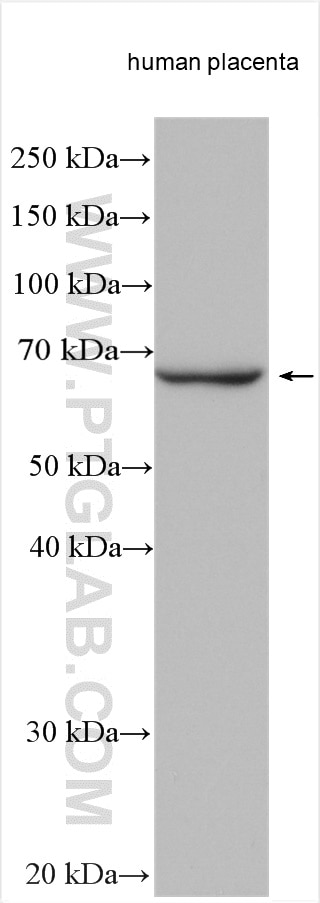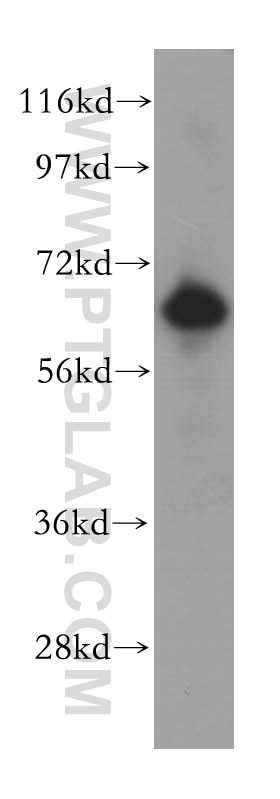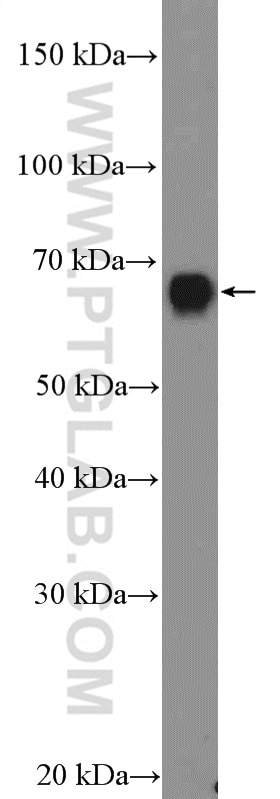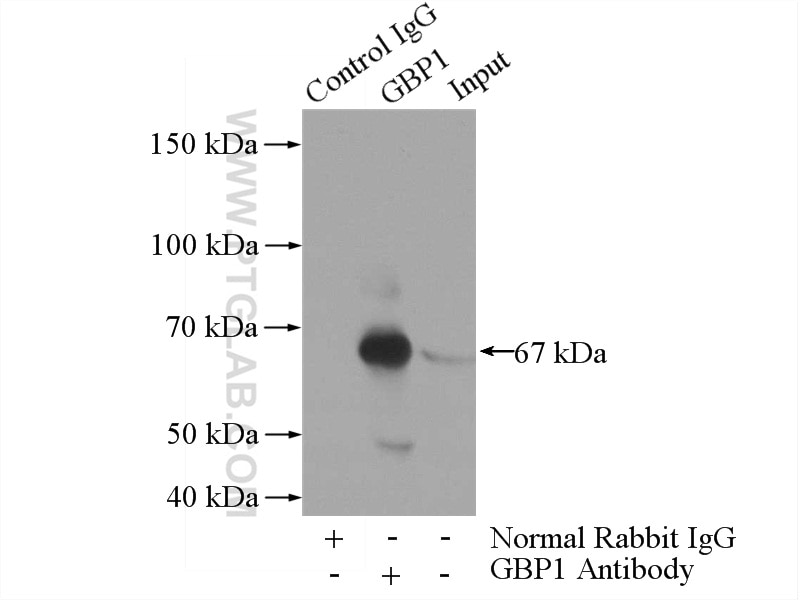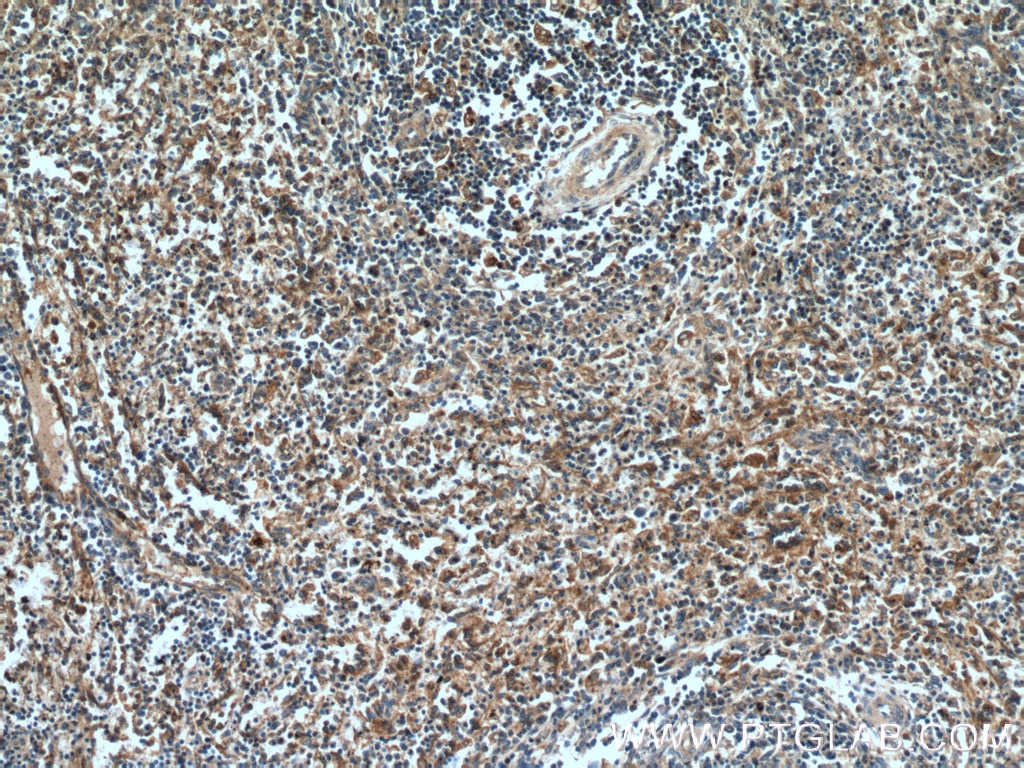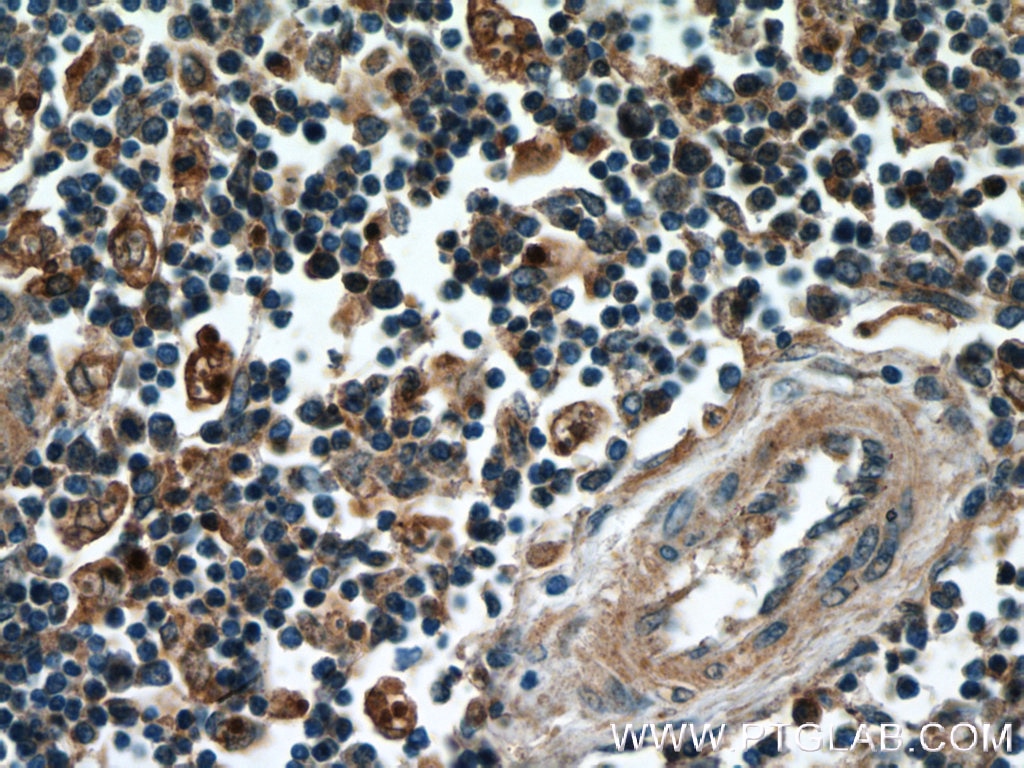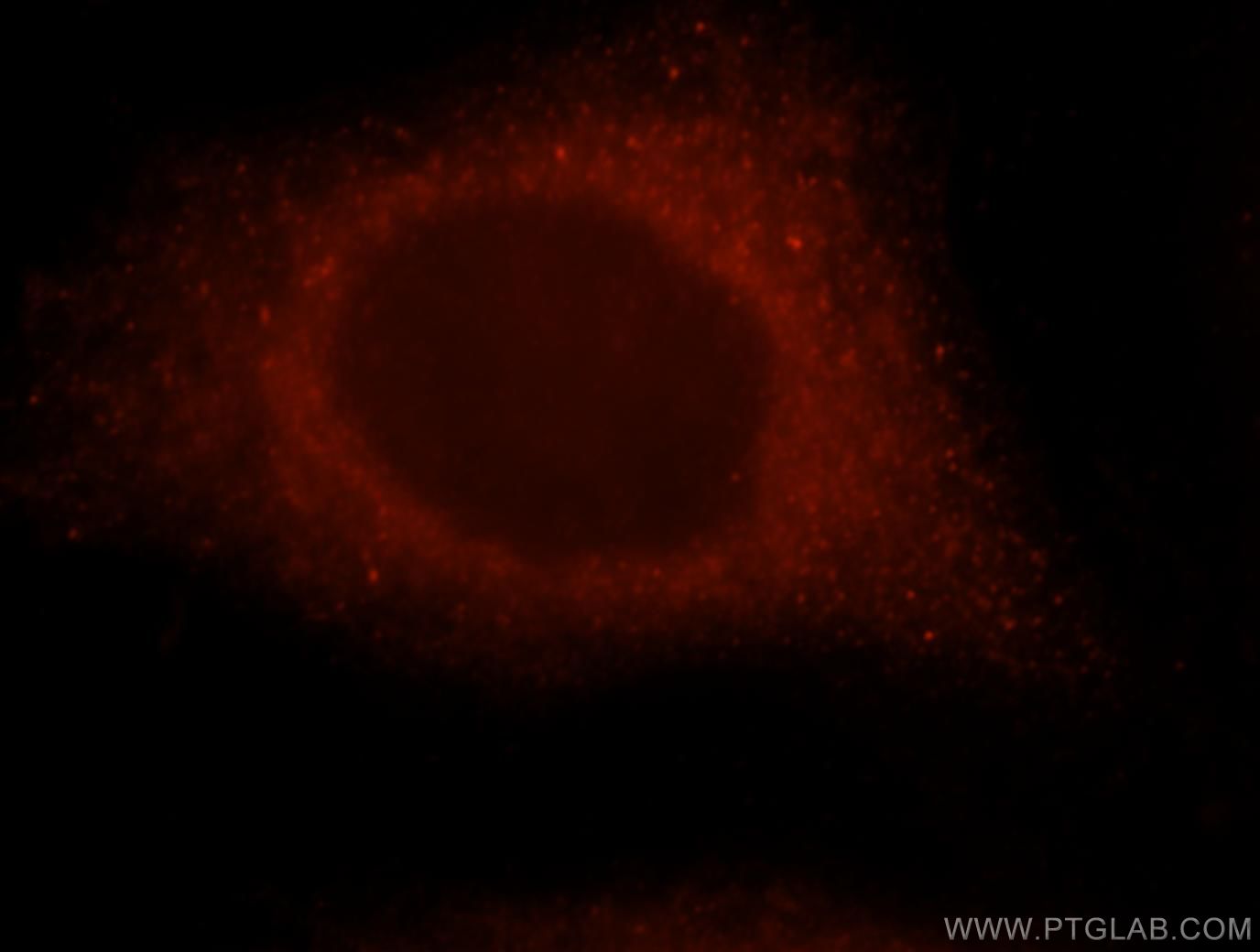- Phare
- Validé par KD/KO
Anticorps Polyclonal de lapin anti-GBP1
GBP1 Polyclonal Antibody for WB, IP, IF, IHC, ELISA
Hôte / Isotype
Lapin / IgG
Réactivité testée
Humain et plus (1)
Applications
WB, IHC, IF/ICC, IP, RIP, ELISA
Conjugaison
Non conjugué
N° de cat : 15303-1-AP
Synonymes
Galerie de données de validation
Applications testées
| Résultats positifs en WB | tissu placentaire humain, cellules HUVEC, tissu cérébral humain |
| Résultats positifs en IP | tissu placentaire humain |
| Résultats positifs en IHC | tissu splénique humain, il est suggéré de démasquer l'antigène avec un tampon de TE buffer pH 9.0; (*) À défaut, 'le démasquage de l'antigène peut être 'effectué avec un tampon citrate pH 6,0. |
| Résultats positifs en IF/ICC | cellules MCF-7 |
Dilution recommandée
| Application | Dilution |
|---|---|
| Western Blot (WB) | WB : 1:500-1:2000 |
| Immunoprécipitation (IP) | IP : 0.5-4.0 ug for 1.0-3.0 mg of total protein lysate |
| Immunohistochimie (IHC) | IHC : 1:50-1:500 |
| Immunofluorescence (IF)/ICC | IF/ICC : 1:10-1:100 |
| It is recommended that this reagent should be titrated in each testing system to obtain optimal results. | |
| Sample-dependent, check data in validation data gallery | |
Applications publiées
| KD/KO | See 6 publications below |
| WB | See 18 publications below |
| IHC | See 6 publications below |
| IF | See 6 publications below |
| RIP | See 1 publications below |
Informations sur le produit
15303-1-AP cible GBP1 dans les applications de WB, IHC, IF/ICC, IP, RIP, ELISA et montre une réactivité avec des échantillons Humain
| Réactivité | Humain |
| Réactivité citée | Humain, souris |
| Hôte / Isotype | Lapin / IgG |
| Clonalité | Polyclonal |
| Type | Anticorps |
| Immunogène | GBP1 Protéine recombinante Ag7562 |
| Nom complet | GTP binding protein 1 |
| Masse moléculaire calculée | 68 kDa |
| Poids moléculaire observé | 67 kDa |
| Numéro d’acquisition GenBank | BC002666 |
| Symbole du gène | GBP1 |
| Identification du gène (NCBI) | 2633 |
| Conjugaison | Non conjugué |
| Forme | Liquide |
| Méthode de purification | Purification par affinité contre l'antigène |
| Tampon de stockage | PBS avec azoture de sodium à 0,02 % et glycérol à 50 % pH 7,3 |
| Conditions de stockage | Stocker à -20°C. Stable pendant un an après l'expédition. L'aliquotage n'est pas nécessaire pour le stockage à -20oC Les 20ul contiennent 0,1% de BSA. |
Informations générales
Guanylate binding protein 1 (GBP1) belongs to the dynamin superfamily of large GTPases. The expression of GBP1 is induced by IFN and GBP1 is characterized by its ability to specifically bind guanine nucleotides such as GMP, GDP, and GTP and its ability to hydrolyze GTP to GDP and GMP.
What is the molecular weight of GBP1?
The molecular weight of GBP1 is 68kDa.
What is the cellular localization of GBP1?
GBP1 is predominantly cytosolic, but under certain conditions is farnesylated and associated with intracellular membranes such as the Golgi (PMID: 15937107).
What is the role of GBP1 in immunity?
GBP1 is induced in response to type I and type II IFN and as such plays a role in protective immunity against a spectrum of intracellular pathogens ranging from viruses to bacteria to protozoa, such as negative-strand RNA Rhabdovirus, vesicular stomatitis virus and the positive-strand RNA Picornovirus, encephalomyocarditis virus in cultured cells, the inhibition of Chlamydia trachomatis, Toxoplasma gondii, and Salmonella enterica (PMID: 21142871). These anti-pathogenic functions involve the recruitment to vacuolar compartments for the destruction of the pathogen, the assembly of innate immune complexes such as the inflammasome, or the initiation of autophagy.
What is the role of GBP-1 in colorectal carcinoma?
In colorectal carcinoma (CRC), the presence of tumor-infiltrating T helper type 1 (Th1) cells participates in anti-tumoral responses and an improved clinical outcome (PMID: 17008531, 20927778). IFN promote the Th1 immune response, as well as GBP-1 expression. In CRC, GBP-1 expression acts as a tumor suppressor, where inhibition of tumor growth by GBP-1 is the result of its strong antiangiogenic activity as well as its direct anti-tumorigenic effect on tumor cells and is correlated with a better outcome (PMID: 23042300).
Protocole
| Product Specific Protocols | |
|---|---|
| WB protocol for GBP1 antibody 15303-1-AP | Download protocol |
| IHC protocol for GBP1 antibody 15303-1-AP | Download protocol |
| IF protocol for GBP1 antibody 15303-1-AP | Download protocol |
| IP protocol for GBP1 antibody 15303-1-AP | Download protocol |
| Standard Protocols | |
|---|---|
| Click here to view our Standard Protocols |
Publications
| Species | Application | Title |
|---|---|---|
Nat Immunol Guanylate-binding proteins convert cytosolic bacteria into caspase-4 signaling platforms.
| ||
Cell Host Microbe GBPs Inhibit Motility of Shigella flexneri but Are Targeted for Degradation by the Bacterial Ubiquitin Ligase IpaH9.8. | ||
J Transl Med Function and mechanism of GBP1 in the development and progression of cervical cancer
| ||
Aging (Albany NY) Immune profiling reveals prognostic genes in high-grade serous ovarian cancer.
|
